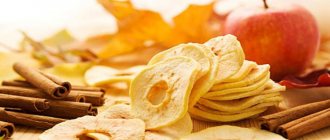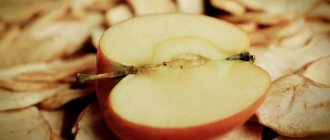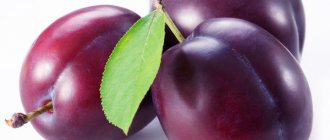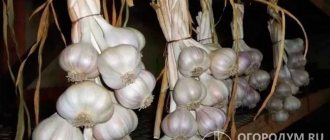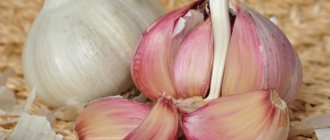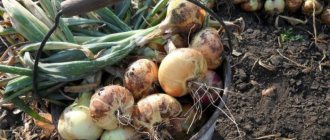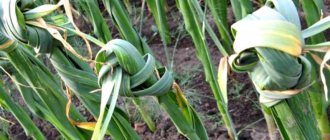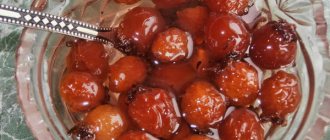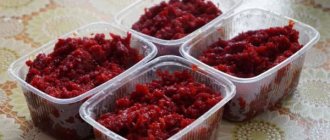Description and features of dried onions
You can prepare dried onions yourself or purchase them ready-made in different fractions. Vegetables prepared on an industrial scale come in two grades: first and highest. The main difference between them is the color of the final product.
All types of dried onions are prepared in several ways:
- Using a tumble dryer. This is the simplest option for drying vegetables. The crushed product is loaded into the drum and blown with a stream of hot air.
- Spraying powder. Chopped onions are sprayed in a stream of air. This drying option is usually used to prepare powder, such as garlic. Although the product turns almost into dust, which is suitable for many consumers, it loses almost all the essential oils and beneficial components. The finished product may be white or golden in color. The latter option is possible if the processing is carried out with too hot air - partial caramelization of the sugar will occur.
- Freeze drying. This option is expensive, but the safest for vegetables, in the sense that it retains all the beneficial substances. The technology of the method is as follows: freezing followed by vacuumization. Moreover, the vacuumization process takes place in such a way that the water inherent in the vegetable passes from a solid state to a gaseous state, bypassing the liquid state. During such processing, the product loses only volatile compounds.
Important! If you soak dried onions prepared by sublimation, you will get a product that has the taste and aroma of a fresh vegetable.
Comparing dried onions with other options for their preparation (frying, baking), it can be noted that they are the most useful product after a fresh vegetable. It is followed by the baked one, which loses a small amount of nutrients, as well as the pungency of taste. In last place in terms of benefits for the body is fried, since it contains only a small part of the substances found in a fresh vegetable.
From the above we can conclude that the main difference between dried onions and baked and fried onions is the presence of useful substances. They also differ in taste and use. For dried, it is not limited - it is suitable for almost all types of dishes: first, second, salads, baked goods. Fried is usually used with first courses and some second courses. Baked - accompanies meat and vegetable dishes cooked in the oven.
The benefits and harms of dried onions
- Since when dried, onions completely retain the substances they contain, the range of their beneficial effects on the body is no less diverse than that of fresh ones:
- Strengthens the immune system.
- Has anthelmintic effect.
- A good therapeutic and preventive remedy for colds.
- Fights hypertension.
- Has an expectorant effect.
- Supports the body in diabetes.
- Stimulates the removal of excess fluid from the body.
- Has a laxative effect.
- Able to overcome scurvy.
- Fights hepatitis A.
- There is also harm from eating onions. It occurs if you neglect its contraindications:
- breastfeeding (babies may refuse breast milk);
- pregnancy (whether a particular pregnant woman can take this seasoning or not, the doctor must say);
- diseases of the oral cavity (the vegetable greatly irritates the mucous membranes and increases the signs of illness);
- pancreatitis (it is strictly forbidden, since the use of the product is fraught with death);
- gastrointestinal diseases (as it is a spicy seasoning);
- gastritis (the product irritates the walls of the stomach and causes very unpleasant sensations);
- liver problems;
- bronchial asthma;
- allergies due to individual intolerance.
Possible problems
Each drying method has its drawbacks. To get a tasty product, you should beware of the following difficulties:
- If it rains while drying the turnips, it is necessary to increase the onion preparation period by 4-5 days.
- If pests are found that spoil the bulbs, you need to find the most affected vegetables and process the rest. This doubles the drying time.
Drying onions for the winter is an activity that does not require a lot of time or special skills from the housewife. However, only with hard work and the desire to make high-quality preparations will you be able to create a tasty spice that will retain its properties for a long time .
Gardeners who want to preserve their harvest for as long as possible must know not only when and how to harvest it, but also how to properly dry onions after harvesting from the garden. During its cultivation, rules for harvesting, drying and storage were developed, following which you can use the heads grown on your site all winter.
What onions can be dried?
There are a huge number of varieties of onions - these are not just the usual turnips or green onions. However, not all of them are suitable for consumption, so the following can be dried:
- Onion. It is often called country or sandy. Refers to perennial plants. It has no bulbs, and the stems are very powerful. Greens grow until frost.
- Bulb. It has long tube-shaped leaves of a dark green color. The bulbs are large. Their color depends on the variety: it can be yellow, purple, white.
- Schnitt or skoroda. It has small leaves with a delicate taste. The harvest is harvested more than once per season.
- Shallot or magpie, bushweed. It has small light purple or white, oval or round bulbs, very juicy and soft. The foliage is narrow, long, delicate.
- Slime. The owner of ribbon, island and succulent foliage. Does not form bulbs. The aroma is similar to garlic.
- Leek. It has bulbs, but the leaves and stem, which have a pleasant aroma and taste, are eaten.
- Cheremsha. A wild variety of onion, but edible. Found in forested areas. It has a peculiar pungent taste, which is why it is often called wild garlic.
- Branched or jusai, fragrant vegetable. It has an onion-garlic flavor. When dried, it goes well with meat and fish dishes, as well as side dishes and pies.
How to dry onions at home
Before you start drying any type of onion, you should definitely chop it. The bulbs are cut into slices or rings 4-5 mm thick. When ready for storage for the winter, the product is placed in convenient containers (jars, boxes) and placed in a cool, dry place.
Did you know? Among the Egyptians, onions were considered a gift from the gods; they swore on this vegetable to confirm their honesty.
In the oven
The most popular option for quickly drying vegetables is using the oven. It should be cut finely, into rings or pieces, depending on the variety, and placed on a parchment-lined baking sheet. The oven needs to be preheated to +50…+60°C. After placing the baking sheet in it, it is not advisable to close the door completely. It should remain slightly open.
In order for the vegetable to dry evenly, it must be stirred and turned over periodically. When the crushed product dries, it should be removed from the oven and left to cool. Afterwards, you can put it in glass jars, bags, and boxes. The container can be absolutely anything, the main thing is that it allows air to pass through.
You will be interested to know how to properly store onions in winter at home.
In an electric dryer
If you have an electric dryer in your arsenal of kitchen appliances, then it is much more efficient to dry vegetables in it than in the oven - the process will go faster and without loss of nutrients. The vegetable is cut and laid out on drying trays. It is better to dry onions in an electrical appliance at a temperature of +55…+65°C. Afterwards, when the vegetable has cooled, it can be placed in any container for storage.
Video: drying onions in an electric dryer
In a convection oven
A convection oven, or convection oven, is a device for cooking food with hot air; It can also be used to dry food. It, like an electric dryer, preserves the appearance, taste and aroma of everything that is dried in it. Thanks to the constant circulation of air heated from the spiral, drying proceeds evenly. This is the fastest method of all the above. To dry, the crushed product is placed in a bowl, the temperature is set to +70°C and the maximum fan speed.
Important! When using any of the methods described above, it is very important to ensure that the onions do not burn.
Outdoors
This drying option is ideal for those who want the vegetable to dry naturally, but it is labor-intensive and time-consuming. The sliced product is laid out on a mesh grid in the shade. The weather should be sunny and calm so that the spice does not fly away in different directions. In bad weather, it can be moved to a ventilated room, but here the drying process will be ineffective. Vegetable slices need to be turned over every day so that they dry evenly.
On air
Onions cut into small slices can also be dried in the air, in the shade. The spicy vegetable is laid out in a thin layer on any surface, for example, cardboard. The rings are turned over daily to dry evenly. This drying method is suitable if the weather is dry and warm.
If the weather is good, then the onions can be dried as a whole, spread out in one layer on a fabric surface directly on the street. In case of cold, rainy weather, it can be stored in a well-ventilated area, such as a barn or hayloft (it is better to keep the door ajar).
Experienced vegetable growers at their dacha make special devices for drying onions with their own hands. If the barn is built in such a way that there is a canopy, you can attach shelves made of blocks to its wall. Such bulbs will not be wet by rain, and air will flow to the vegetable around the clock.
Using dried onions
In dried form, the spice is used in the preparation of a wide variety of dishes. It perfectly complements vegetable, mushroom, meat, fish dishes, and goes well with savory delicacies. Dried vegetables can be an excellent replacement for fresh ones.
We recommend that you find out whether onions can be frozen.
Typically it is used:
- in salads;
- in soups;
- in second courses;
- in marinades;
- in pies;
- in minced meat;
- in sandwiches;
- in snacks;
- in conservation;
- in some desserts.
Dried onions are a useful vitamin seasoning. For a long time, it does not lose its properties: neither taste, nor aroma, nor useful. Therefore, if there are no contraindications, you can safely add spice to any dishes.
Storage methods
Any dried product has increased hygroscopicity - the ability to absorb water from the surrounding space. A humid environment provokes the development of rot and mold - the product hopelessly loses quality.
- Vegetables dried for winter storage, chopped onion or green, are stored in cardboard boxes in a dry, dark, cool (ventilated) room (basement or cellar). It is better to use boxes (boxes) of small volume - approximately 10 liters, 5-6 kg of dry product.
- For daily use, dry sliced onions or green feathers are stored in jars with a tight-fitting lid. It is necessary to exclude access to sunlight and heat to the product: a suitable place is a closet, a bedside table in the kitchen.
